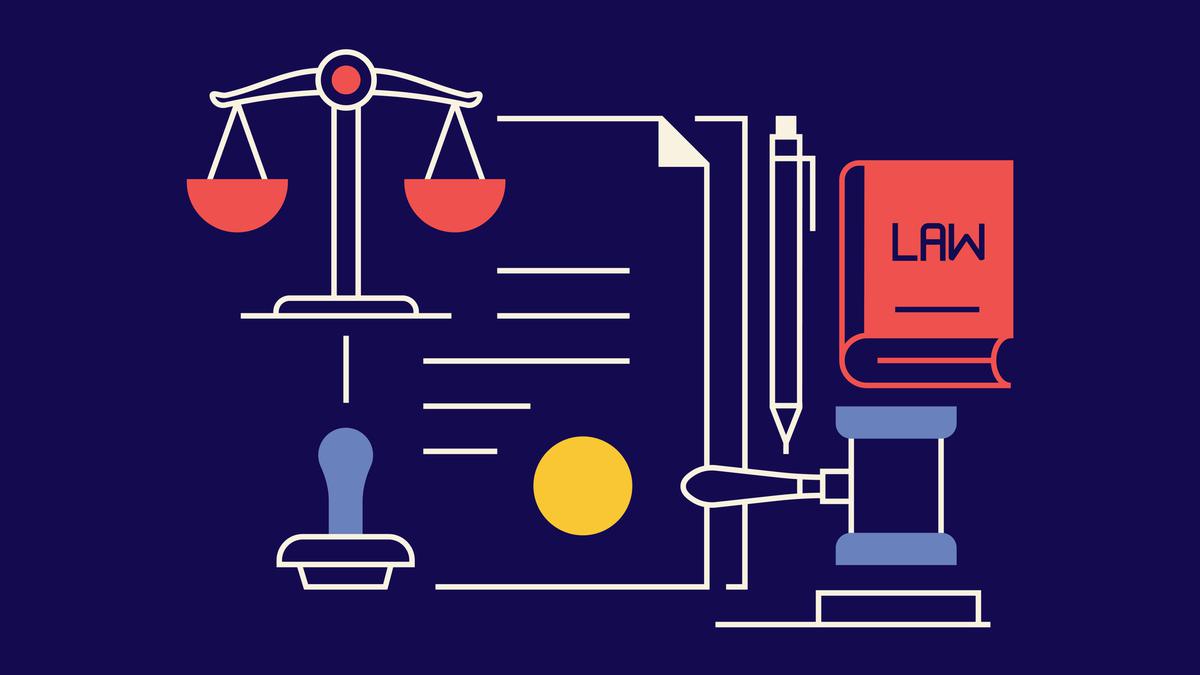
On the listing of cases in the Supreme Court | Explained
The Hindu
Two lawyers have raised issues of irregularities in the listing of cases before the SC, with one letter addressed to the CJI and the other to the Registry. Mr. Dave questioned the movement of cases from one Bench to another, while Mr. Bhushan referred to the Handbook and Clause 15 of the automated listing scheme. The SC Bar Association president expressed shock at Mr. Dave's letter. The CJI, as master of roster, is entrusted with the responsibility of safeguarding personal liberty.
The story so far: Two letters written separately by lawyers, Dushyant Dave and Prashant Bhushan, addressed directly to the Chief Justice of India D.Y. Chandrachud and the Supreme Court Registry, respectively, complaining of “irregularities” in the listing of cases have sharply divided the Bar.
Mr. Dave, in his open letter to the Chief Justice, said cases, some of them involving human rights and functioning of statutory and constitutional institutions, had been suddenly “taken away” from Benches hearing them and listed before other Benches. He said matters, instead of remaining with the presiding judge of the Bench which earlier issued notice (first coram) had followed the puisne judge (second coram) when the latter started heading a new Bench in “clear disregard” of rules, procedure and established conventions. The senior lawyer said the Chief Justice as the ‘master of the roster’ should look into the issue.
The letter was penned a few days after Mr. Dave, on November 29, appearing before a Bench headed by Justice Bela Trivedi in a petition filed by the Tamil Nadu Directorate of Vigilance and Anti-Corruption concerning a fresh inquiry into corruption charges against former Chief Minister Edappadi Palaniswami in an alleged State Highway tender scam, questioned the move to take the case from a Bench led by Aniruddha Bose, before which it was listed previously. The Bench headed by Justice Trivedi, who was earlier the puisne judge in Justice Bose’s Bench, dismissed the case on December 8.
Mr. Bhushan wrote his letter on the same day to the Registrar (Listing) of the Supreme Court. He focused on the journey of a batch of petitions filed by advocates and journalists who were charged under the Unlawful Activities Prevention Act (UAPA) for their work and critical views about the state’s response to the Tripura violence of October 2021. These petitions were earlier listed before a Bench headed by Justice Chandrachud, which had passed substantive orders to protect the petitioners from coercive action by the State. In October 2023, it, however, came up before a Bench of Justices Aniruddha Bose and Trivedi, which ordered the cases to be listed before the “appropriate Bench”. However, instead of being listed before Justice Chandrachud again, the petitions came up on November 29 before the Bench headed by Justice Trivedi. When Mr. Bhushan pointed out to Justice Trivedi that the case had “departed from the normal course of listing” and should be referred back to the Chief Justice for appropriate orders on the administrative side, Justice Trivedi’s Bench said the case was listed as per earlier orders and the petitioners were free to take action.
The issues highlighted in the letters are two. Firstly, the movement of cases, already listed and in which notices were issued by a Bench, to another Bench. Secondly, whether a case can “follow” a puisne judge when the senior judge, who was heading the court before which the matter was earlier listed, was still available. The two lawyers insist that the CJI, as master of roster who has administrative control over the allocation of cases, should respond.
The Supreme Court Rules of 2013 are silent as to the powers of the master of the roster to constitute roster, Benches and for allocation of cases. However, the Handbook on Practice and Procedure of the Court and Office Procedure on the judicial side published by the Supreme Court in 2017 explicitly says that the Registry functions on the general and special instructions and orders of the Chief Justice of India as regards allocation of work to a Bench and assignment of cases from one Bench, on account of non-availability, to another Bench.
Mr. Dave pointed to the section on ‘cases, coram and listing’ to note that once a case has been listed or notice issued or dismissed or disposed of or heard in part at admission hearing stage, it can only be listed before the Bench of the first coram and none other. Mr. Bhushan, in his turn, referred to Clause 15 of the ‘Overview of the New Scheme for Automated Listing of Cases’ published also in 2017, which noted that “subject to the orders of the Chief Justice of India, if the court directs listing or tagging with a matter pending in another court, and the matter is listed accordingly, the coram of the main matter, with which the matter is directed to listed/tagged, will prevail”. He claimed that both Clause 15 and the procedure in the Handbook were “arbitrarily breached”.













